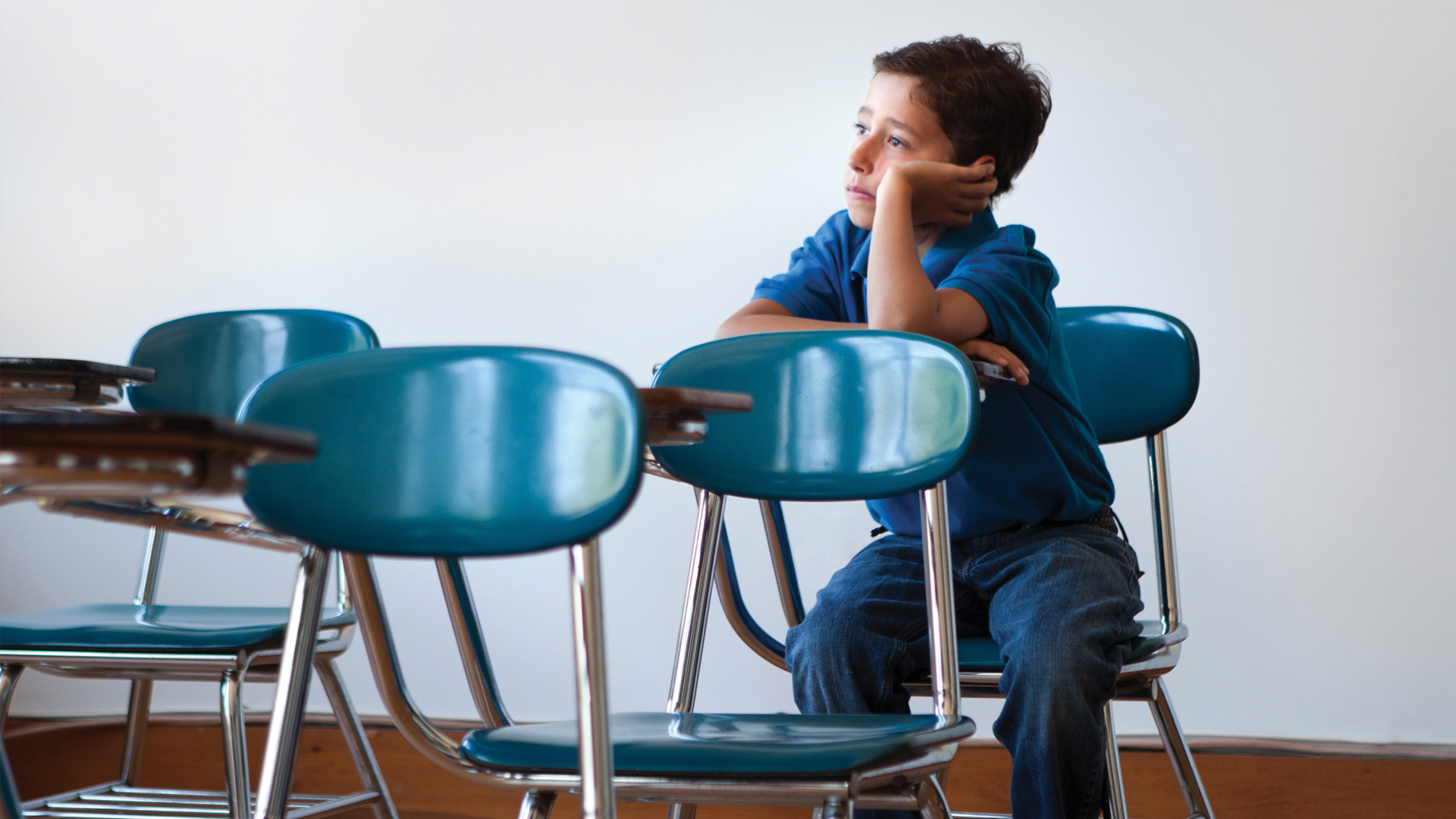Middle school is socially, psychologically, and biologically a difficult time period. Middle school students are often going through or about to go through puberty, which introduces a flux of hormones and body changes that are difficult and uncomfortable to understand. In addition to these changes, adolescents’ brains are continuing to develop, forming new neural connections (Spear, 2014). And outside of the biological changes, middle school can provide a plethora of new social and interpersonal challenges for incoming students.
Moreover, students who are in middle school in the aftermath of COVID face a relatively new set of challenges compared to pre-COVID middle schoolers. School-aged adolescents were more likely to have seen a counselor or been hospitalized related to their mental health. Post-COVID adolescents also reported more depression and anxiety symptoms, and greater emotion dysregulation (Panchal et al., 2021).
In our role as interns with the Aevidum organization, we interviewed students at Nazareth Middle School in Northampton County in eastern Pennsylvania for this article. Aevidum is a student-run organization that promotes mental health awareness among grade-school and middle-school students; the school in Nazareth has an Aevidum Club and the students we interviewed were members of that group.
What Challenges Are They Facing?
Seventh graders who participated in the interview reported the change in schedule from elementary school, the length of classes, the increase in homework assignments, and the variety of teachers as their main stressors related to the middle-school environment. Additionally, they noted that the early start times demand a new sleep schedule that some middle schoolers struggle to keep up with. Peer drama also begins to increase in middle school, with students mentioning that it was “distracting in class” because they were unaware of what to do.
Students also mentioned that their classroom environments affect their mental health. Although their schedules differ from elementary school, students felt “locked in” and like they “[couldn’t] really escape” because the “same thing’s happening every day.” How students feel in their classes depends on their teachers, how their teachers teach, and the environments that the teachers cultivate within their classrooms. Without support, students feel like “it’s harder to be yourself in class.”
With all of these changes (and more not mentioned), students can feel uncomfortable talking about their mental health and finding support systems in their school.
What Sources of Support Exist?
Many kids who participated in the interview go to the in-school counseling center for anxiety and peer-related drama. Students can drop in during off hours to meet with counselors and talk about their concerns. Additionally, students are able to report any peer-related concerns to the counseling center. Nazareth Area Middle School also provides services that are easily accessible to concerned parents, such as access to providers of outpatient therapy.
Additionally, the school also offers a variety of different mental health programs and services, such as Safe to Say, an anonymous reporting program, as well as hosting clubs such as Aevidum. Some examples of Aevidum programming include:
- Hanging yellow hands (the symbol of Aevidum) in the cafeteria, with the names of each student and teacher, to represent the value and importance of each individual community member as well as the community of support available for each student.
- Students also mentioned sending positive notes via postcards to people from the school to brighten other students’ days.
- Schools also host assemblies and presentations to provide prevention education and life skills training.
The small initiatives that Aevidum puts on are student-run / student-accessible resources to remind every student that they are cared for and have support at school.
One barrier to accessing support services was that some students did not seem aware of all such services their school provides. Additionally, some students expressed their discomfort in not knowing if their reports were taken seriously, as they were often not updated after the fact due to confidentiality.
What can help?
The main source of relief that students expressed from school-related stressors and mental health concerns was a healthy activity that worked as an outlet. Each seventh-grade student spoke of activities that helped them “disconnect” from their everyday life and instead allowed them to focus on something they enjoyed. Outlets like these “take your mind off of whatever’s going on outside of it,” a stark contrast from being “locked in” while in school.
For instance, one student reported that cheerleading helped them focus on physical activity, as well as provided a community for them to connect with like-minded peers. Similarly, another student reported dancing as her favorite activity (despite training for 37 hours a week), saying that dancing “helped (her) only focus on what [she] was doing…(and) forget about [everything else] for a second.”
Another student reported that theater was their “happy place,” noting that other students seemed “happier” there, more open than they were in their classes. Through theater, students reported that it was nice to “play someone else for a second, so [they] can focus on stuff [their characters] are going through, rather than [their] own stuff, like an escape.” Extracurricular activities that students willingly participated in seemed to contribute most to their overall happiness, as it gave them a welcome respite to their busy schedules and peer-related drama.
In addition to extracurricular activities, students reported feeling happiest and “most themselves” when in an environment where they felt comfortable. When speaking about classes they enjoyed, the attitude and connection with their teachers seemed to be the most important factor. The students reported enjoying hands-on activities and creative styles of teaching, in which the teacher connected with the students and allowed them to have fun while learning.
Conclusion
Overall the students we spoke with feel like “there is always someone who can talk to you,” but they sometimes feel apprehension about going to those resources. This emphasizes the importance of providing opportunities for students to explore their identities and passions outside of the classroom: “When you’re doing something you like, it’s easier to be yourself.” Students reported that activities such as listening to music, playing with their dogs, showering, and reading bring them joy. While resources within schools are being used, it’s important to note that many students are not fully knowledgeable of them.
Even with the resources in schools, suicide is still a leading cause of death for adolescents. Therefore, it is important for all students to have opportunities that are beneficial to their mental health and for education systems to offer these opportunities to foster a greater sense of mental health and well-being in their students.

Jess Langlois

Hanna Provost
Jess Langlois and Hanna Provost attended Lafayette College in Easton, PA as psychology majors, and interned with Aevidum as seniors during the 2023-2024 school year.
Thanks to the members of the seventh-grade class at Nazareth (PA) Middle School for sharing their thoughts with Healing Magazine.






